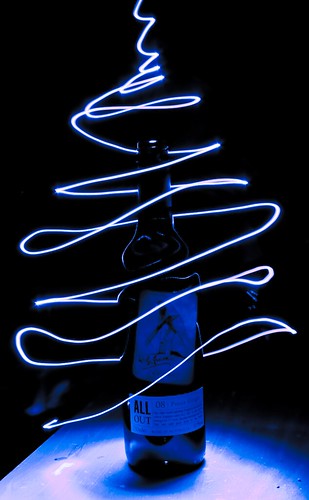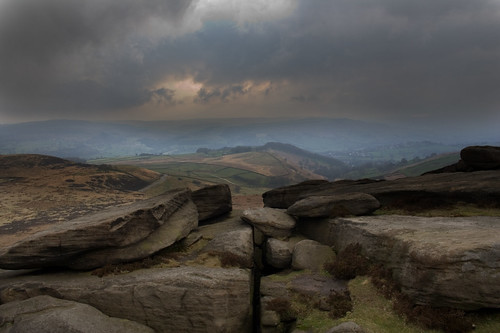The Christmas break this year gave me the opportunity to play around a bit with long exposure shots. The bottle picture on the right is the best of my experiments, and is a single 20 second exposure with minimal post-processing. The set-up was easy – just an empty bottle of wine, a darkened room, a blue wooden table, a tripod, and a blue LED penlight.
The idea was that once the shutter opened, I would move the penlight torch around the bottle in what would hopefully be a spiral shape. The movement produces the bright light trail, but also leaves enough light to illuminate the base and some of the bottle – in particular the label.
The trickiest part of the setting up is to determine the focus point. You can’t use the camera’s automatic focus as there is not enough light in the scene for the auto-focus system to work. While you could just switch to manual mode, on the basic SLR I used – a Canon EOS 350D – manual focusing aides are a bit limited. Instead I switched the main room light on, used the camera’s auto-focus to pick out the bottle, and then switched the lens to manual focus mode, being careful not to disturb the lens at all. I then killed the lights to start the shoot.
Continue reading


